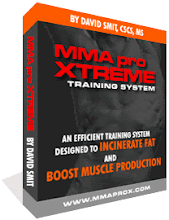
Until recently, the cornerstone of most resistance training workouts has been performing exercises in a straight set format. Essentially, this means you perform a certain number of reps for a chosen exercise and then you rest anywhere from 30 seconds to five minutes based on your training goals before repeating this set a certain number of times based on your goals (Generally 3 sets of 10 is common). For more of a fat loss and lean muscle gain emphasis shorter rest periods are ideal. For more of a strength or power emphasis, longer rest periods are prescribed.
So, what’s the problem with this format? Well, though straight sets are extremely easy to digest for people new to fitness, they are also an extremely inefficient way to organize your training. In most commercial gyms you’ll typically see someone perform three sets of 10 reps for let’s say the bench press. They pump out 10 reps, go to the water fountain, talk with some buddies, watch a couple of highlights on TSN, and then make their way back to the bench to hit up their second set. In general, most people, guys in particular, tend to take about 3-5 minutes between sets. In the case of three sets of 10 on the bench that means it would take up to 15 minutes to complete only one exercise. That means you’d need at least in hour to perform four different exercises! This is pure bullshit. If you need more than 1-2 minutes rest, we better have a talk about conditioning.
A much more effective and time saving method to ordering your exercises is using the alternating set format. Here you’ll perform one exercise, rest for a short period of time, then perform another non-competing exercise, rest for a short period of time, and so forth. Alternating sets allow you to work different areas of your body when you would otherwise be resting with the straight set format. Plus, by working another area of your body with a non-competing exercise you allow your body to recover from the previous exercise(s). The result is more work accomplished in less time, the cornerstone of any sound fat loss program. There are several ways to perform alternating sets outlined below:
1.) Supersets: Alternate between two different non-competing exercises (e.g. upper body and lower body such as push-ups and lunges)
2.) Trisets: Alternate between three different exercises (e.g. push, pull, and lower body such as push-ups, rows, and lunges)
3.) Circuits: Alternate between four or more different exercises
Though circuits and trisets are excellent alternating set options, I believe superset training is by the far the best option time and time again.
Here is an example of some superset training we use in our
Bridge: 100 jump Ropes

Exercise#2a- Pull-ups
Exercise#2b- Leg Raises
Bridge: Jogging Burpees
Perform each superset up to four times for total body fat burning workout.
Basically, in the same 15 minutes that it took to get in three sets on the bench you could have gotten in three sets of two different exercise for a staggering total of 15 work sets! Plus, the intensity on each exercise will be just as high as in the straight set format because in this five exercise circuit you will have full recovery with over four minutes before you return to any given exercise (just as you did with the straight set format described earlier).
To recap, the key to creating the optimal hormonal environment for fat loss is to perform each exercise with maximal intensity while separated by brief rest periods in order to accumulate a high volume of total body work in the shortest amount of time possible. Circuit training provides for the best of both worlds and is thus simply unmatched for simultaneously maximizing fat loss and lean muscle gain. Use the following template I use with my many boot camp clients for some killer, yet simple fat loss circuits:
Exercise#1- Double-Leg
Exercise#2- Push
Exercise#3- Single-Leg
Exercise#4- Pull
Exercise#5- Core
I’ll be sharing some more great circuit training workouts from my boot camps in the weeks to come.
Stay Strong
Paulv
www.ultimatefitnessgyms.com



No comments:
Post a Comment